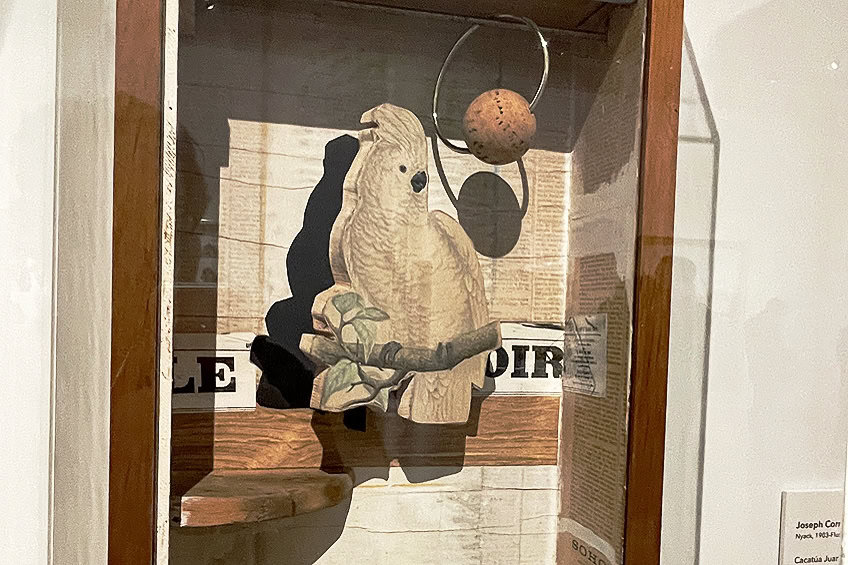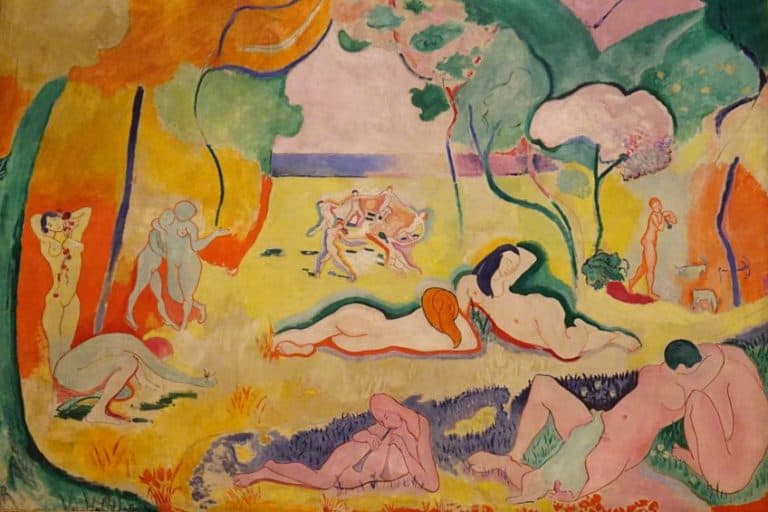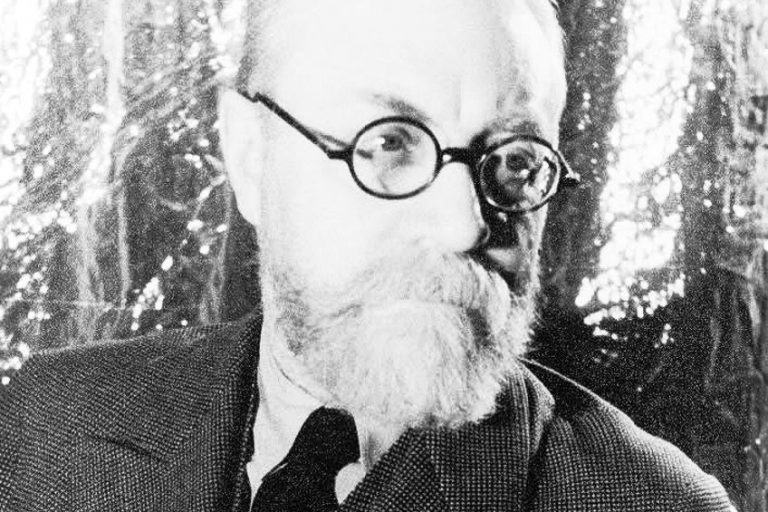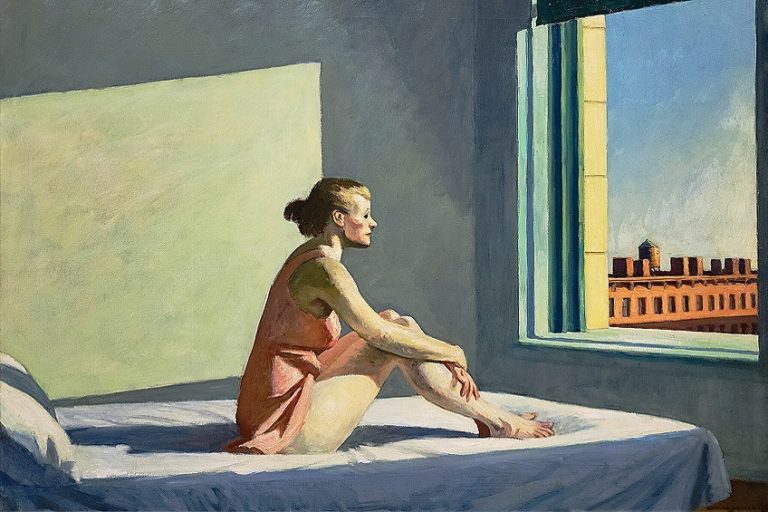“A Parrot for Juan Gris” by Joseph Cornell – A Cubist Tribute
Joseph Cornell’s A Parrot for Juan Gris is a captivating assemblage piece that pays homage to the Cubist master Juan Gris. This artwork exemplifies Cornell’s innovative approach to surrealist collage and shadow boxes, blending everyday objects with dreamlike elements to evoke a sense of nostalgia and whimsy. Created in his signature style, the piece features a parrot perched within a shadow box, surrounded by intricate cutouts and collaged fragments, reminiscent of Gris’s own cubist compositions. Cornell’s reverence for Gris is evident in the meticulous arrangement and thoughtful interplay of textures and forms, making A Parrot for Juan Gris a poignant tribute to the legacy of the Spanish painter and a testament to Cornell’s unique artistic vision.
Key Takeaways
- Joseph Cornell’s A Parrot for Juan Gris was created in 1953.
- The artwork showcases Cornell’s signature assemblage style.
- The piece is both a tribute to Juan Gris and a notable example of the Surrealist movement.
The Artistry of Joseph Cornell
| Artist | Joseph Cornell (1903 – 1972) |
|---|---|
| Date Created | 1953 |
| Medium | Mixed media |
| Genre | Assemblage |
| Period/Movement | Surrealism |
| Dimensions (cm) | 45.1 x 31 x 11.7 |
| Series/Versions | Single version |
| Where Is It Housed? | National Gallery of Art, Washington D.C., United States |
| What It Is Worth | Not publicly auctioned; significant cultural and historical value |
Joseph Cornell’s A Parrot for Juan Gris is a fascinating piece of art that continues to captivate audiences. This artwork, created in 1953, stands out as a quintessential example of Cornell’s unique assemblage style, combining various media elements to form a coherent and intriguing narrative. The piece is known for its intimate and detailed composition, which invites viewers to ponder the relationship between the objects within the box. Cornell’s ability to transform everyday items into compelling art is prominently displayed in this work. By incorporating objects such as collaged maps and paper cutouts, he pays tribute to Juan Gris, a Spanish painter and influential figure in the Cubist movement.

The title itself, A Parrot for Juan Gris, suggests a dialogue between Cornell’s assemblage style and Gris’s Cubist paintings, merging different artistic worlds. The history and significance of A Parrot for Juan Gris are deeply rooted in the Surrealist movement. Created during the later years of Cornell’s career, it reflects his mature vision and skill. This piece is one of the most notable examples from his Aviaries series and remains a beloved example of how art can transcend time and medium to remain relevant across generations.
The Studio at Utopia Parkway
Cornell’s studio was located at Utopia Parkway in Queens, New York, where he lived most of his life. This space was central to his artistic practice, filled with collected objects, photographs, and materials that he used in his artworks. He transformed everyday items into intricate, dreamlike boxes that told complex visual stories.
The studio itself was a reflection of his artistic vision, blending elements of his personal history with broader cultural references.
Collage and Assemblage Styles
Cornell is celebrated for his inventive use of collage and assemblage. He combined various materials such as paper, photographs, and found objects to create his pieces. These works are often described as surrealist, yet they possess a structured, almost realistic quality. His famous piece, A Parrot for Juan Gris, exemplifies this approach by integrating elements that appear disjointed yet form a cohesive, intriguing narrative. Cornell’s ability to repurpose mundane items into meaningful art has cemented his place in the art world as a master of assemblage.
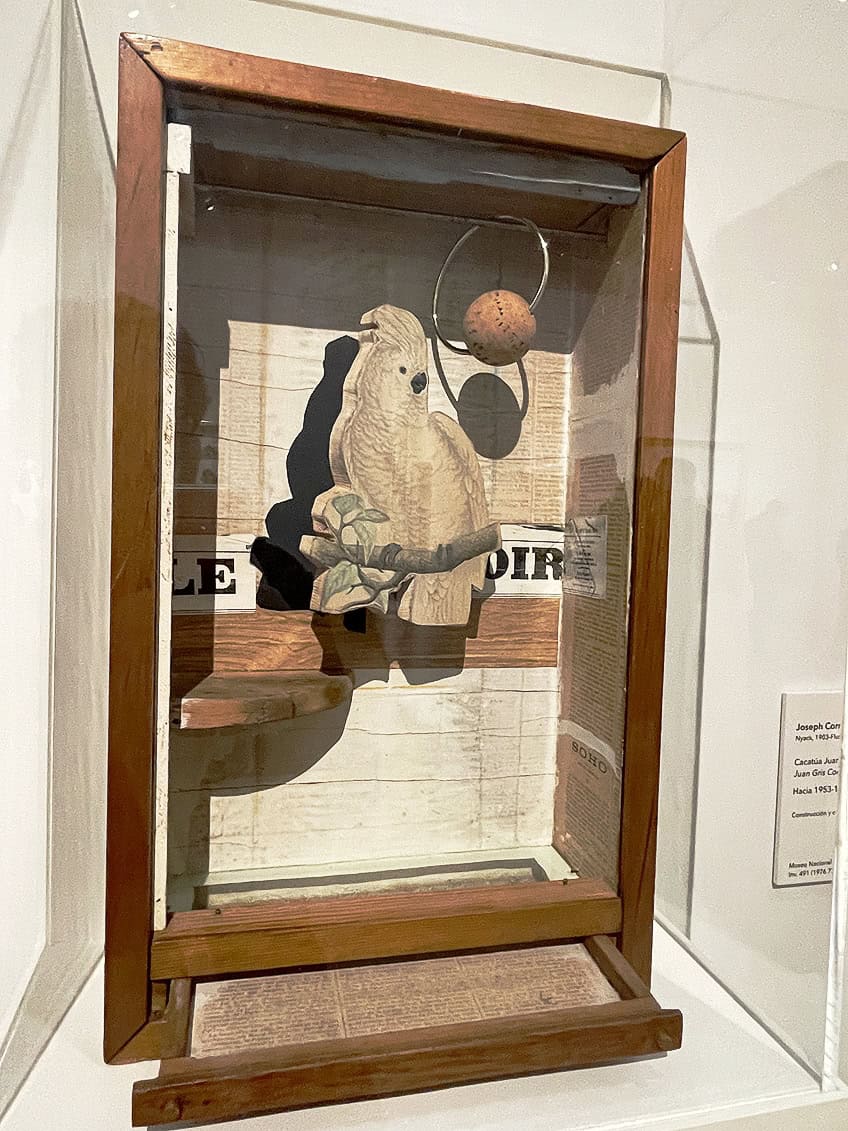
Analyzing A Parrot for Juan Gris
Joseph Cornell’s A Parrot for Juan Gris, created in 1953, is a notable example of box construction within the Surrealist movement. This detailed analysis focuses on its unique composition and techniques, alongside the symbolism and interpretations embedded in the artwork.
Composition and Technique
Joseph Cornell’s work is defined by his use of box construction, a medium where he meticulously arranges different materials inside wooden boxes. The box includes elements like paper, ink, glass, and cork balls. Each object is carefully placed to create a visual narrative that captivates the viewer. The assemblage technique—combining various materials—gives depth and personality to the piece.
Cornell’s precise placement of items like the parrot image and other cut-outs forms a cohesive, engaging scene that reflects his Surrealist inspirations.
Symbolism and Interpretations
The artwork’s title hints at a connection to Juan Gris, a prominent Cubist painter. The presence of the parrot may symbolize mimicry or the repetition of artistic styles, paying homage to Gris’s influence. Cornell’s use of cork balls and other objects can be interpreted as representing whimsical and nostalgic themes, often seen in his work. The confined space of the box perhaps reflects the idea of capturing memories or dreams in a tangible form. Overall, the intricate design and symbolic layers encourage viewers to ponder the deeper meanings behind the familiar objects within the box, linking past art movements with personal expression.
A Parrot for Juan Gris in Modern Art
A Parrot for Juan Gris is a significant work by Joseph Cornell, exemplifying his unique style within the Surrealist movement. This piece also plays a critical role in modern art, illustrating how Cornell’s collages and boxes contributed to later art movements.
Place in Cornell’s Oeuvre
Joseph Cornell’s A Parrot for Juan Gris is part of his renowned Aviary series. Created between 1953 and 1954, this box construction demonstrates Cornell’s fascination with birds and nature, and his mastery of transforming mundane objects into complex, evocative artworks. The Aviary series drew inspiration from a pet store display, and Cornell began this series in 1943, focusing on it through the early 1950s.

Cornell, known for his assemblage art, meticulously constructed these miniature worlds using everyday items like maps, newspapers, and printed images. This artwork, specifically, shows his homage to Juan Gris, a key figure in Cubism. By merging his style with surrealist techniques, Cornell played with the concept of memory and nostalgia.
Legacy and Collections
A Parrot for Juan Gris is housed prominently in the National Gallery of Art, having been donated by Aimee and Robert Lehrman. This piece is notable not only for its artistic merit but also for its place in the Lehrman collection of Joseph Cornell’s works. Cornell’s works are also featured in esteemed institutions such as the Guggenheim and the Royal Academy. His influence has permeated private collections and public museums alike.
Collectors and historians value such pieces for their intricate details and the emotional depth they convey.
Influence of the Sculpture Today
The impact of A Parrot for Juan Gris extends beyond Cornell’s lifetime, resonating with contemporary artists and art movements. His technique of assembling found objects inspired artists like Marcel Duchamp and Robert Rauschenberg. Cornell’s approach can be seen in the Pop Art movement, which also utilized everyday objects to challenge traditional art boundaries. Surrealists appreciated Cornell’s ability to evoke dreamlike states, and his work continues to influence modern artistic practices. His boxes are studied for their innovative use of materials and conceptual depth, making A Parrot for Juan Gris a significant piece in modern art study.

Joseph Cornell’s A Parrot for Juan Gris stands as a testament to his mastery of surrealist collage and assemblage. Through this artwork, Cornell not only pays homage to the Cubist genius Juan Gris but also showcases his own distinctive artistic voice. The intricate layering of objects, textures, and symbolism within the shadow box invites viewers into a realm of imagination and nostalgia, where everyday elements are transformed into poetic and dreamlike compositions. A Parrot for Juan Gris remains a timeless example of Cornell’s ability to fuse the mundane with the magical, leaving a lasting impact on the legacy of surrealism and artistic innovation.
Frequently Asked Questions
What Materials Did Joseph Cornell Use in A Parrot for Juan Gris?
Joseph Cornell used various found objects and materials to create A Parrot for Juan Gris. This included items like glass, wood, and paper. His craftsmanship combined these elements into a box construction that measured around 45.1 x 31 x 11.7 cm.
What Is the Historical Significance of A Parrot for Juan Gris Within Cornell’s Body of Work?
A Parrot for Juan Gris is significant as it represents Cornell’s tribute to Spanish painter Juan Gris, a key figure in the Cubist movement. Created in 1953, this piece showcases Cornell’s continued fascination with paying homage to other artists through his shadow boxes.
How Does A Parrot for Juan Gris Reflect Joseph Cornell’s Artistic Style?
The piece reflects Cornell’s distinctive style, known for its dream-like quality and meticulous construction. By using a confined box space filled with whimsical and symbolic objects, Cornell captured a surreal, introspective world that invites viewers to explore themes of memory, nostalgia, and fantasy.
What Is the Interpretive Approach to A Parrot for Juan Gris by Art Critics?
Art critics view A Parrot for Juan Gris as a complex yet enchanting work that emphasizes Cornell’s ability to create narratives through assemblage. The homage to Juan Gris suggests a deep respect and dialogue between Cornell’s Surrealist practices and Gris’s Cubist innovations, highlighting the interplay of different artistic movements.
Isabella studied at the University of Cape Town in South Africa and graduated with a Bachelor of Arts majoring in English Literature & Language and Psychology. Throughout her undergraduate years, she took Art History as an additional subject and absolutely loved it. Building on from her art history knowledge that began in high school, art has always been a particular area of fascination for her. From learning about artworks previously unknown to her, or sharpening her existing understanding of specific works, the ability to continue learning within this interesting sphere excites her greatly.
Her focal points of interest in art history encompass profiling specific artists and art movements, as it is these areas where she is able to really dig deep into the rich narrative of the art world. Additionally, she particularly enjoys exploring the different artistic styles of the 20th century, as well as the important impact that female artists have had on the development of art history.
Learn more about Isabella Meyer and the Art in Context Team.
Cite this Article
Isabella, Meyer, ““A Parrot for Juan Gris” by Joseph Cornell – A Cubist Tribute.” Art in Context. July 5, 2024. URL: https://artincontext.org/a-parrot-for-juan-gris-by-joseph-cornell/
Meyer, I. (2024, 5 July). “A Parrot for Juan Gris” by Joseph Cornell – A Cubist Tribute. Art in Context. https://artincontext.org/a-parrot-for-juan-gris-by-joseph-cornell/
Meyer, Isabella. ““A Parrot for Juan Gris” by Joseph Cornell – A Cubist Tribute.” Art in Context, July 5, 2024. https://artincontext.org/a-parrot-for-juan-gris-by-joseph-cornell/.


